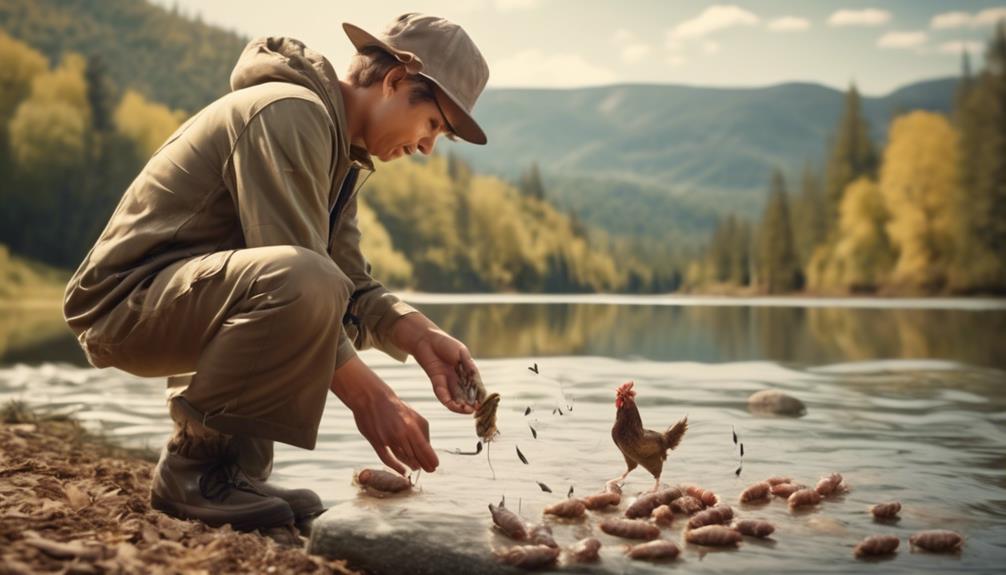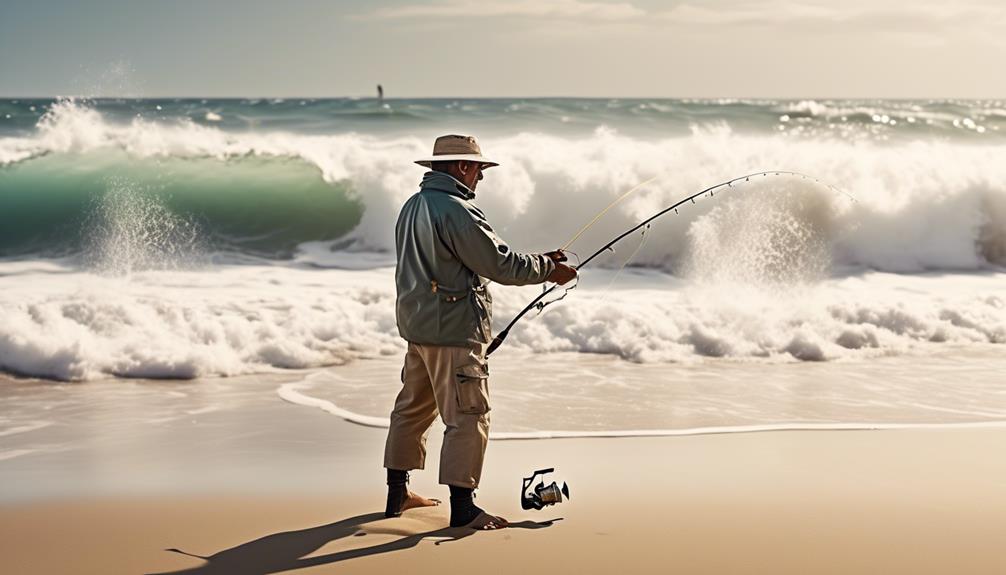You've probably heard that using natural bait is a game-changer when it comes to catching catfish. But do you know the specific tips and techniques that can significantly increase your success?
Whether you're a seasoned angler or just starting out, mastering the art of using natural bait can make all the difference in your catfishing adventures.
In the following discussion, we'll explore eight expert tips that will help you maximize your chances of landing more catfish using natural bait.
Understanding Catfish Behavior
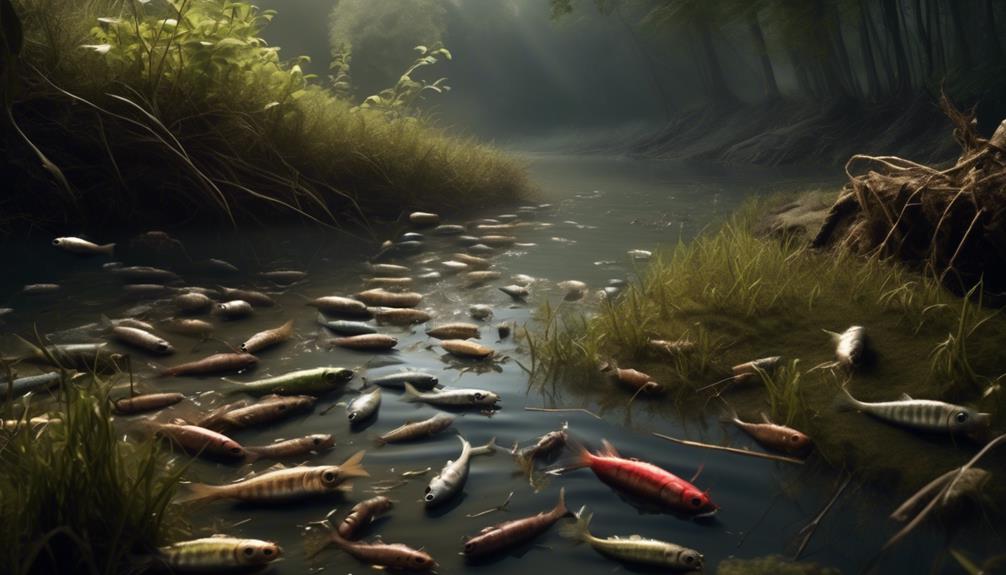
To increase your chances of catching more catfish, it's essential to understand their behavior in different water conditions.
Catfish are known for their adaptability to various habitats, making them a popular choice for anglers. In rivers with strong currents, catfish tend to seek refuge in calmer waters, such as deep holes or behind structures like rocks and fallen trees. Understanding this behavior can guide your fishing strategy, as these are the areas where you're more likely to find catfish waiting for their next meal.
During the night, catfish are more active and tend to move into shallower waters to feed. This knowledge can be advantageous for anglers looking to target catfish, as fishing during the night or in the early hours of the morning can significantly increase your chances of a successful catch. Additionally, catfish have a strong sense of smell and are attracted to scents in the water. Utilizing natural bait that emits strong odors, such as cut bait or chicken liver, can effectively lure catfish to your fishing spot.
In warmer months, catfish are often found in deeper waters where the temperature is cooler. As the temperature drops in the fall and winter, catfish migrate to shallower areas to feed. Knowing these seasonal patterns can help you determine the best locations to target catfish throughout the year.
Identifying Effective Natural Baits
Understanding catfish behavior in different water conditions will help you identify effective natural baits to attract them to your fishing spot. When fishing for catfish, it's essential to consider the water temperature and clarity. In warmer water, catfish are more active and willing to chase down live bait, such as shad, bluegill, or crawfish. In contrast, in cooler water, catfish are less active and prefer to scavenge for dead or decaying natural baits like cut fish, chicken liver, or nightcrawlers.
Another crucial factor in identifying effective natural baits is the type of catfish species you're targeting. For instance, channel catfish are known to be more aggressive and are attracted to stronger-smelling baits like stinkbaits and blood baits. On the other hand, flathead catfish are more selective and tend to favor live bait, such as sunfish or goldfish. Knowing the species of catfish in your area will help you choose the most effective natural bait.
Furthermore, understanding the natural prey of catfish in the specific water body you're fishing in can give you valuable insights into the best natural baits to use. Observing the environment and researching the local fish and aquatic life can help you mimic the catfish's natural food sources, increasing your chances of a successful catch.
Locating Catfish Hotspots
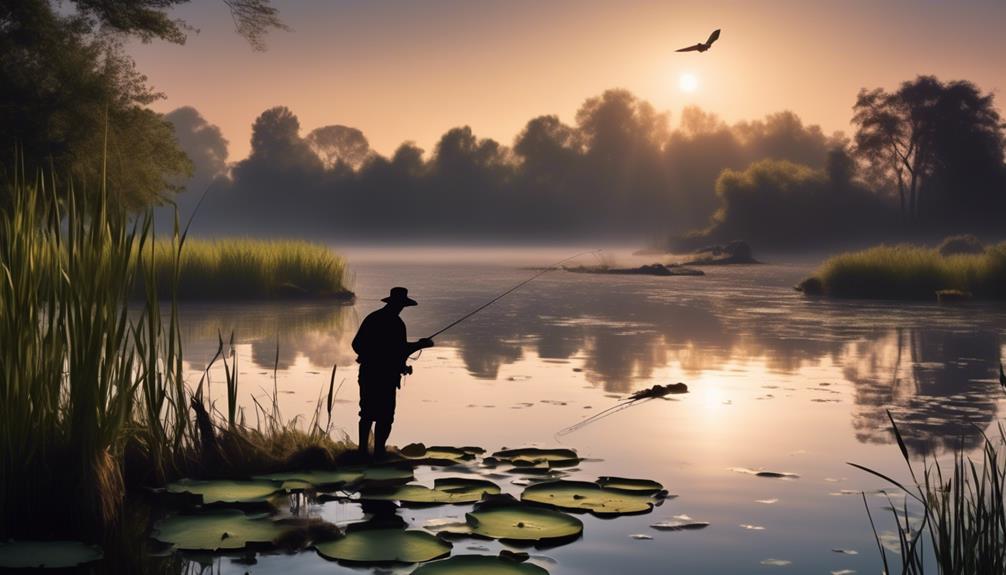
When searching for catfish hotspots, focus on areas with abundant cover, such as submerged logs and rock formations, where catfish often seek shelter and prey. Catfish are known to be bottom-dwellers and prefer areas with structures that provide hiding spots and protection. Look for deep holes, channels, and underwater ledges where catfish can hide during the day and come out to feed during the night. These areas are prime hotspots for catching catfish.
Another important hotspot for catfish is where there's a confluence of currents. Catfish are opportunistic feeders and will station themselves at the meeting point of two currents, waiting for food to be carried to them. This is especially true in rivers and streams, where the flow of water brings in food and nutrients, attracting catfish to these areas.
In addition, pay attention to areas with underwater vegetation, as they provide a rich source of food for catfish and attract prey species, which in turn draw in catfish. Look for submerged grass beds, weed lines, and areas with overhanging trees or bushes. These spots not only provide cover for catfish but also attract smaller fish and insects, creating a feeding ground for catfish.
Proper Bait Presentation
Looking for a way to entice catfish in their hiding spots? Ensuring proper bait presentation can significantly increase your chances of luring them out. To maximize your success, it's crucial to pay attention to the details of how you present your bait. Here are some tips to help you achieve the perfect bait presentation.
First, consider the depth at which catfish are feeding. If they're near the bottom, your bait should be presented close to the riverbed. Use a sinker to ensure your bait stays in the strike zone.
Secondly, using the right hook is essential. For natural baits like worms or minnows, a simple bait holder hook is often sufficient. However, for larger baits such as live bluegills, a circle hook can be more effective.
Furthermore, it's vital to keep your bait as natural-looking as possible. Avoid packing the bait too tightly onto the hook, as this can restrict its movement and make it appear unnatural to the catfish.
Moreover, consider the current and how it may affect your bait presentation. If there's a strong current, you may need to add additional weight to keep your bait in place. Conversely, in still waters, you can let the natural movement of the bait entice the catfish.
Lastly, be patient and observant. Pay close attention to any signs of catfish activity and be prepared to adjust your bait presentation accordingly.
Selecting the Right Fishing Gear
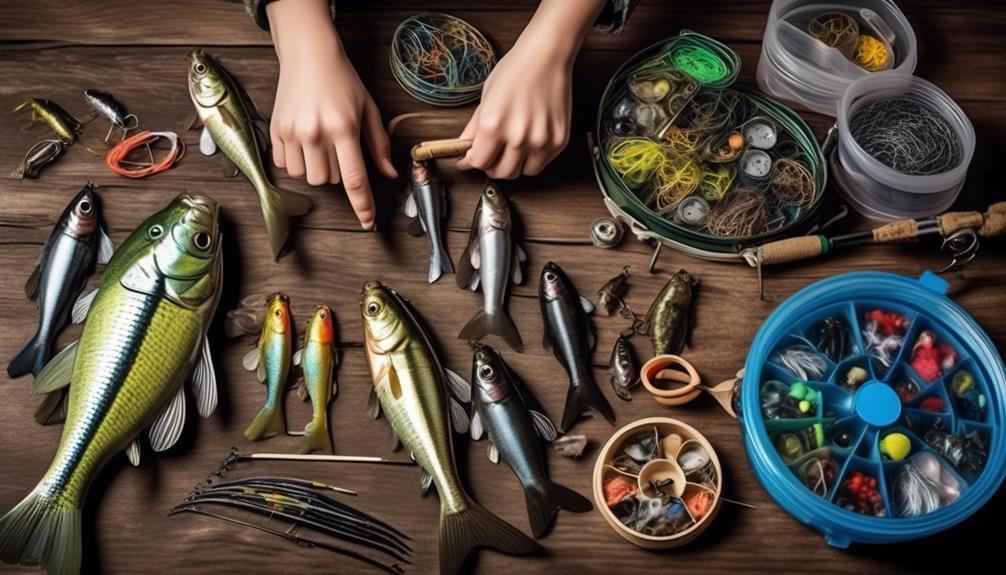
Consider the weight of the catfish you're targeting when selecting your fishing gear. Different catfish species vary greatly in size and weight, so it's essential to match your gear to the specific type of catfish you aim to catch. For smaller catfish species, a lighter rod and reel setup with a test line in the 6- to 12-pound range should suffice. However, if you're targeting larger catfish, such as blue or flathead catfish, opt for a heavier rod and reel combo with a test line of at least 20 pounds.
When it comes to hooks, choose a size that corresponds to the catfish species you're pursuing. For smaller channels and bullheads, a size 1 to 1/0 hook is appropriate, while larger blue and flathead catfish may require a 4/0 to 8/0 hook to handle their powerful bites.
Selecting the right sinkers is also crucial. For fishing in current or windy conditions, heavier sinkers are necessary to keep your bait anchored. Egg sinkers in the 1/2 to 3-ounce range work well for average-sized catfish, while larger specimens may require 4 to 8-ounce sinkers to maintain bait placement.
In addition to the basic gear, having a sturdy landing net or gaff is imperative for safely bringing in larger catfish. Ensure that your gear is durable and capable of withstanding the strength of the catfish you're targeting.
Maximizing Bait Attractiveness
Want to attract more catfish with your bait? Maximizing bait attractiveness is essential for increasing your chances of a successful catfishing trip. One way to do this is by using fresh, natural bait that catfish find irresistible. Live bait such as nightcrawlers, minnows, and shad are excellent choices. The movement and scent of live bait can draw catfish in and entice them to bite. If live bait isn't available, fresh cut bait like shad, skipjack herring, or bluegill can also be effective.
Another tip for maximizing bait attractiveness is to use bait that catfish are naturally drawn to. For example, catfish are scavengers and are attracted to strong-smelling bait such as chicken liver, blood bait, or even rotten cheese. These pungent scents can travel through the water, catching the attention of catfish and encouraging them to investigate further. Additionally, using natural bait that's native to the body of water you're fishing in can be advantageous. Catfish are accustomed to feeding on local species, so using bait that they're familiar with can increase your chances of a bite.
Furthermore, consider using bait that contrasts with the surrounding environment. For example, if the water is murky or muddy, using a brightly colored bait can help it stand out and grab the attention of catfish. Conversely, in clearer waters, natural-colored bait may be more effective.
Mastering Hook Setting Techniques
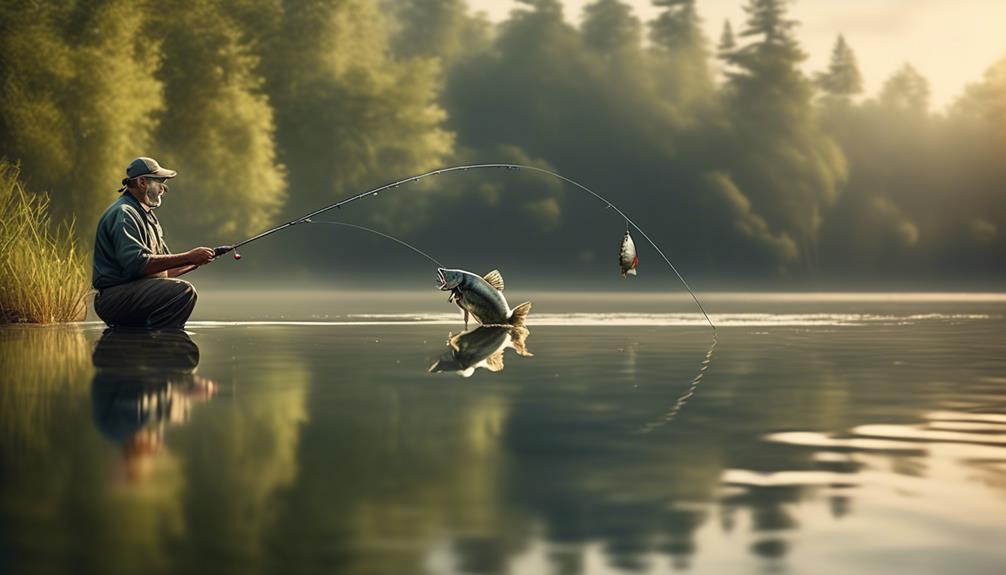
To improve your success in catching catfish, mastering hook setting techniques is crucial for effectively securing your catch. Proper hook setting can make the difference between a successful catch and a missed opportunity. Here are some key tips to help you master hook setting techniques:
- Maintain a tight line: After feeling a bite, quickly reel in any slack in the line and keep it taut. This ensures that when you set the hook, the force is immediately transferred to the fish, increasing the chances of a solid hook set.
- Use a decisive hook set: When you feel a bite, swiftly but firmly jerk the rod to set the hook. A strong, swift motion can help drive the hook into the fish's mouth, preventing it from spitting out the bait.
- Avoid over-setting the hook: While a decisive hook set is important, be cautious not to overdo it. Setting the hook too aggressively can lead to the hook tearing through the fish's mouth or causing the line to snap. Practice finding the right balance between a strong and gentle hook set.
Handling and Releasing Catfish Safely
After mastering hook setting techniques to secure your catch, it's essential to handle and release catfish safely to ensure their well-being and the sustainability of the population.
When handling a catfish, always use wet hands or a wet cloth to minimize damage to their protective mucus layer. Avoid putting your fingers in their gills or eyes and be mindful of their sharp spines. If you need to handle a catfish with a firm grip, use a pair of fish-friendly gloves or a specialized lip-gripping tool to minimize stress and potential harm to the fish.
When it comes to releasing catfish, do so gently and with care. Hold the fish in the water and allow it to revive by moving it back and forth to ensure proper oxygen flow through its gills. If the fish is sluggish or having trouble swimming away, give it some more time to recover. It's important to release catfish in the same area where they were caught to ensure they can return to their habitat without unnecessary stress.
Additionally, be mindful of the fishing gear you use. Using barbless hooks can make it easier to release catfish with minimal harm. If you do use barbed hooks, be prepared with pliers to safely remove them, minimizing the time the fish spends out of the water.
Frequently Asked Questions
What Are Some Common Mistakes Anglers Make When Using Natural Bait for Catfish?
When using natural bait for catfish, avoid mistakes like using the wrong size hook, not checking bait freshness, and casting too far from cover. Always be patient and stay attentive to increase your chances of success.
Are There Any Specific Natural Baits That Work Best for Catching Larger Catfish?
For catching larger catfish, use natural baits like live baitfish, nightcrawlers, or cut bait. These baits are effective at attracting big catfish. Cast near cover and be patient – it's a waiting game!
How Can Weather Conditions Affect the Effectiveness of Natural Bait for Catfish?
Weather conditions can significantly impact the effectiveness of natural bait for catfish. Rain can wash bait away, while warm, sunny days may increase catfish activity. Pay attention to the weather forecast and adjust your fishing strategy accordingly.
What Are Some Alternative Methods for Presenting Natural Bait to Attract Catfish?
To attract catfish with natural bait, try using a slip sinker rig or a bobber rig. With a slip sinker rig, the bait rests on the bottom, while a bobber rig suspends the bait at a desired depth.
Are There Any Specific Regulations or Guidelines for Using Natural Bait When Fishing for Catfish in Certain Areas?
Do you know if there are any specific regulations or guidelines for using natural bait when fishing for catfish in certain areas? It's important to check local fishing regulations to ensure you're using bait in compliance with the rules.
Conclusion
Now that you've learned these tips for using natural bait to catch more catfish, get out there and put them to use. Remember to pay attention to catfish behavior, use effective natural baits, and locate hotspots.
Proper bait presentation, the right gear, and bait attractiveness are key. Master hook setting techniques and handle catfish safely for a successful fishing trip.
Happy fishing!
